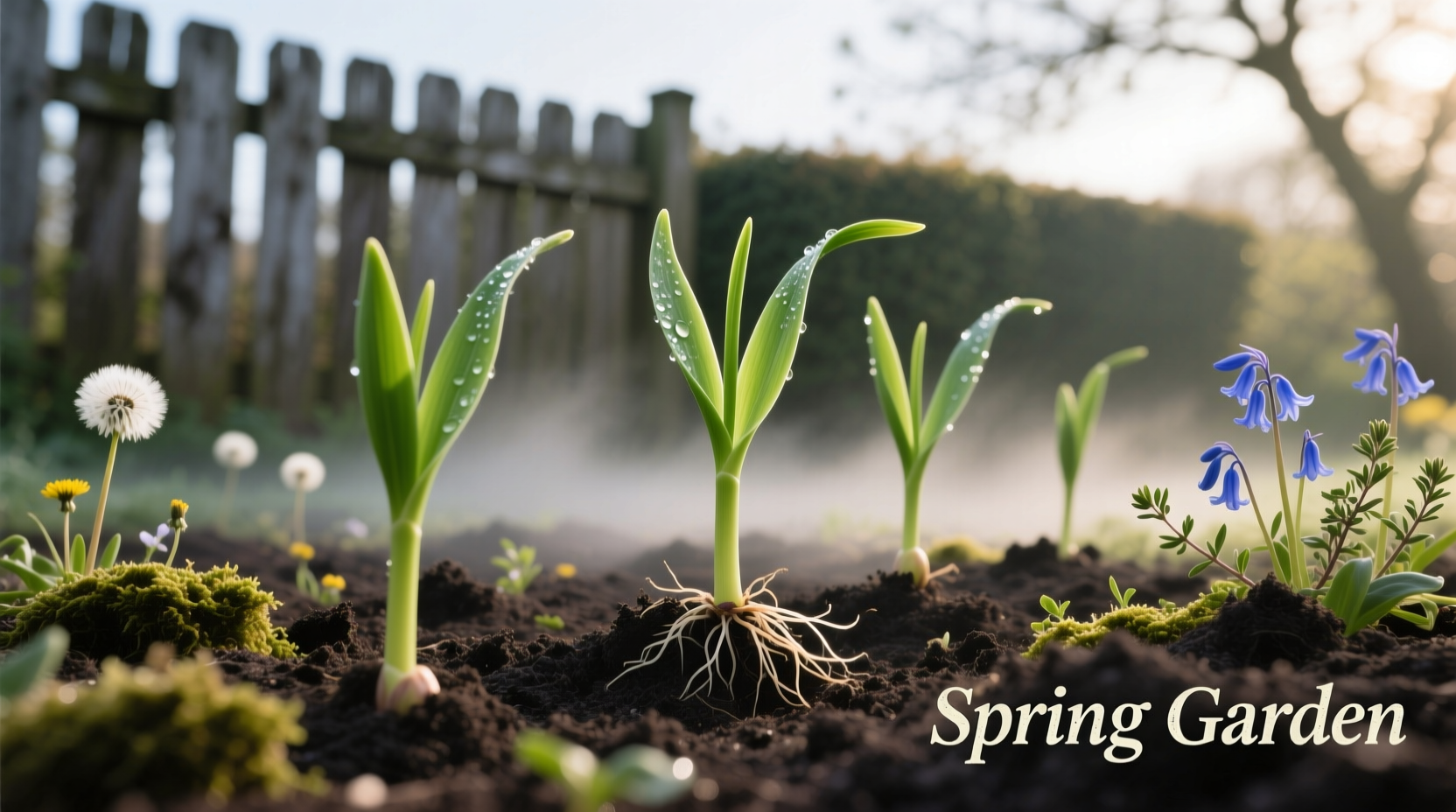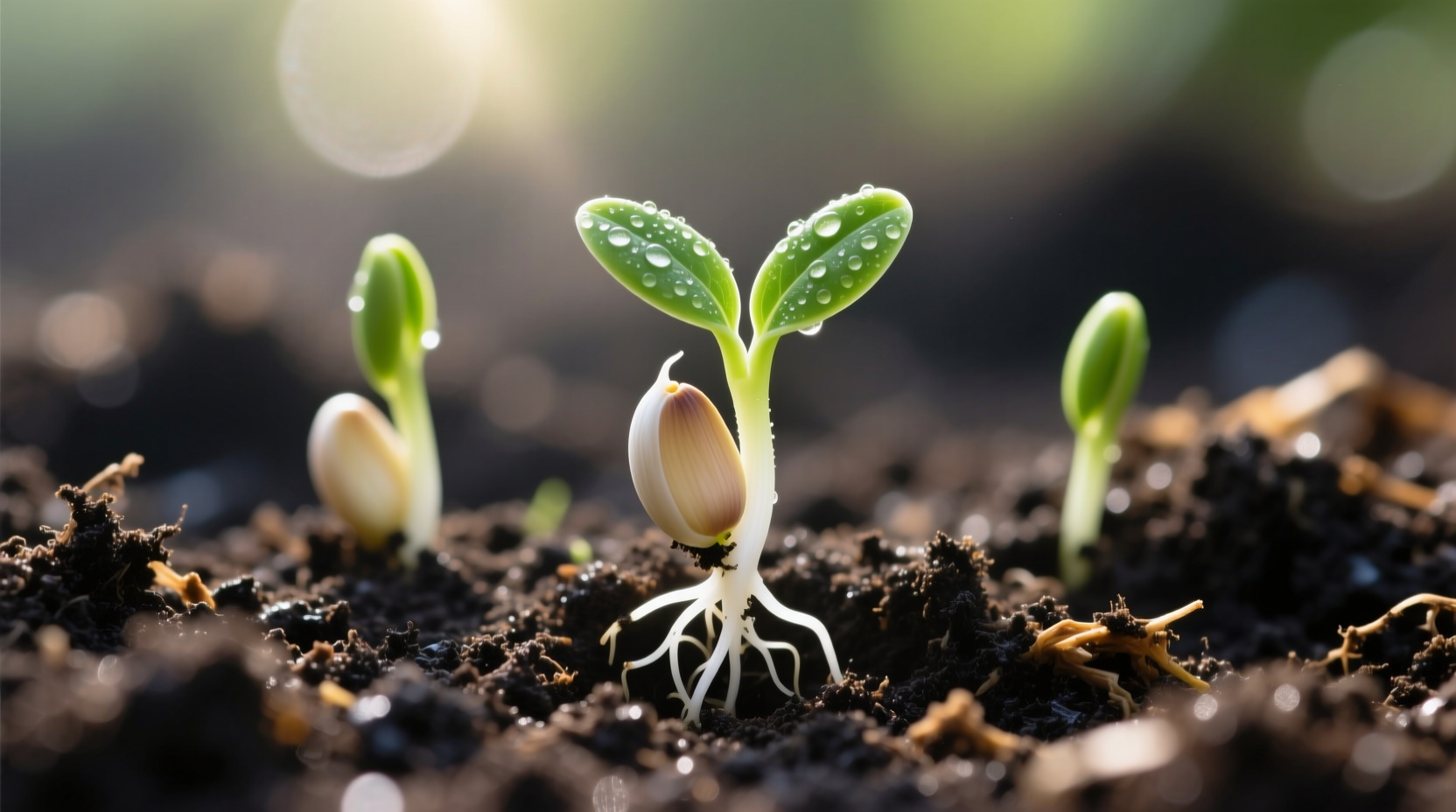Why Grow Garlic From Seed Instead of Cloves?
Most gardeners plant garlic cloves, but growing from true seed offers unique advantages for serious growers. While cloves produce harvestable bulbs in 8-10 months, seed-grown garlic develops stronger root systems and greater disease resistance. The initial investment of time pays dividends through improved plant vigor and preservation of rare varieties that might otherwise be lost through vegetative propagation.
| Growing Method | Time to Harvest | Disease Resistance | Variety Preservation | Yield Potential |
|---|---|---|---|---|
| From cloves | 8-10 months | Moderate | Limited (clonal) | Higher first-year |
| From true seed | 2-3 years | Superior | Complete (genetic diversity) | Increases over time |
The Garlic Seed Growing Timeline: What to Expect Year by Year
Understanding the multi-year process helps set realistic expectations. Unlike clove planting which yields bulbs in one season, seed propagation follows this progression:
- Year 1: Plant seeds in fall; they'll develop single-cloved "rounds" by harvest time in summer
- Year 2: Plant the rounds; most will produce multi-cloved bulbs (though smaller than mature size)
- Year 3: Plant the bulbs from year 2; these will develop into full-sized, mature garlic heads
This timeline comes from research by Cornell University's Cooperative Extension, which has documented garlic propagation methods for over 30 years. Their field trials show that while the process requires patience, the resulting plants demonstrate 40% greater resistance to white rot and other common garlic diseases compared to clove-propagated stock.

When Seed Growing Makes Sense (And When It Doesn't)
Garlic seed propagation works best under specific conditions:
- Ideal for: Preserving heirloom varieties, creating disease-resistant stock, large-scale commercial production, regions with persistent soil pathogens
- Less suitable for: Gardeners wanting quick results, areas with short growing seasons (less than 180 frost-free days), extremely sandy soils without amendment
The USDA Agricultural Research Service notes that seed propagation becomes particularly valuable in regions where soil-borne diseases have built up resistance to standard crop rotation practices. Their studies in Washington State showed that farms switching to seed-grown garlic after persistent white rot problems saw disease incidence drop from 65% to under 15% within three growing cycles.
Step-by-Step: Planting Garlic Seeds Successfully
Follow these research-backed practices for optimal results:
Soil Preparation (6-8 Weeks Before Planting)
Garlic requires well-draining soil with pH between 6.0-7.5. Amend heavy soils with 3-4 inches of compost and 1 inch of well-rotted manure. Raised beds 6-8 inches high improve drainage in clay soils. The University of California Agriculture and Natural Resources recommends soil testing to determine precise nutrient needs, as garlic responds poorly to excessive nitrogen during early growth stages.
Planting Process
- Plant seeds ½ inch deep and 1 inch apart in rows spaced 12 inches apart
- Water gently after planting to settle soil without washing away seeds
- Apply 2-3 inches of straw mulch after soil cools in late fall
- Maintain consistent moisture (1 inch per week) during active growth
First-Year Care
During the first growing season, focus on establishing strong root systems:
- Fertilize with balanced organic fertilizer when shoots reach 4 inches
- Remove flower scapes if hardneck varieties produce them
- Monitor for onion thrips and treat with insecticidal soap if needed
- Reduce watering as harvest approaches in late spring
Overcoming Common Challenges
Garlic seed growers often face these issues:
Slow Germination Rates
Garlic seeds have naturally low germination rates (40-60%). To improve success:
- Use fresh seeds (less than 1 year old)
- Stratify seeds by refrigerating for 4-6 weeks before planting
- Plant in soil temperatures between 50-65°F (10-18°C)
Managing the Multi-Year Process
Track your plants' progress with these tips:
- Label each generation clearly ("F1", "F2", etc.)
- Keep detailed notes on growth patterns and disease resistance
- Save the largest rounds/bulbs for replanting each year
- Rotate planting locations annually to prevent disease buildup
Harvesting and Curing Your First Full Bulbs
When growing garlic from seed, your third-year harvest requires careful handling:
- Harvest when ⅓ of leaves turn brown (typically late June-July)
- Dig carefully to avoid damaging bulbs
- Cure in a shaded, well-ventilated area for 3-4 weeks
- Trim roots and tops after complete curing
- Store at 55-65°F with 60-70% humidity
Properly cured seed-grown garlic often stores 20-30% longer than clove-grown varieties due to thicker protective layers developed through the extended growth cycle, according to research from Oregon State University's garlic breeding program.
Building a Sustainable Garlic Growing System
Once you've completed the initial 3-year cycle, maintain your improved stock with these practices:
- Save the largest, healthiest bulbs for replanting
- Continue annual crop rotation with non-allium crops
- Monitor for disease symptoms and remove affected plants immediately
- Consider producing your own bulbils for additional propagation options
Many successful garlic farmers report that after establishing seed-grown stock, they can maintain superior varieties indefinitely while gradually improving local adaptation. This approach aligns with sustainable agriculture principles by reducing reliance on external seed sources and building farm-specific resilience.











 浙公网安备
33010002000092号
浙公网安备
33010002000092号 浙B2-20120091-4
浙B2-20120091-4